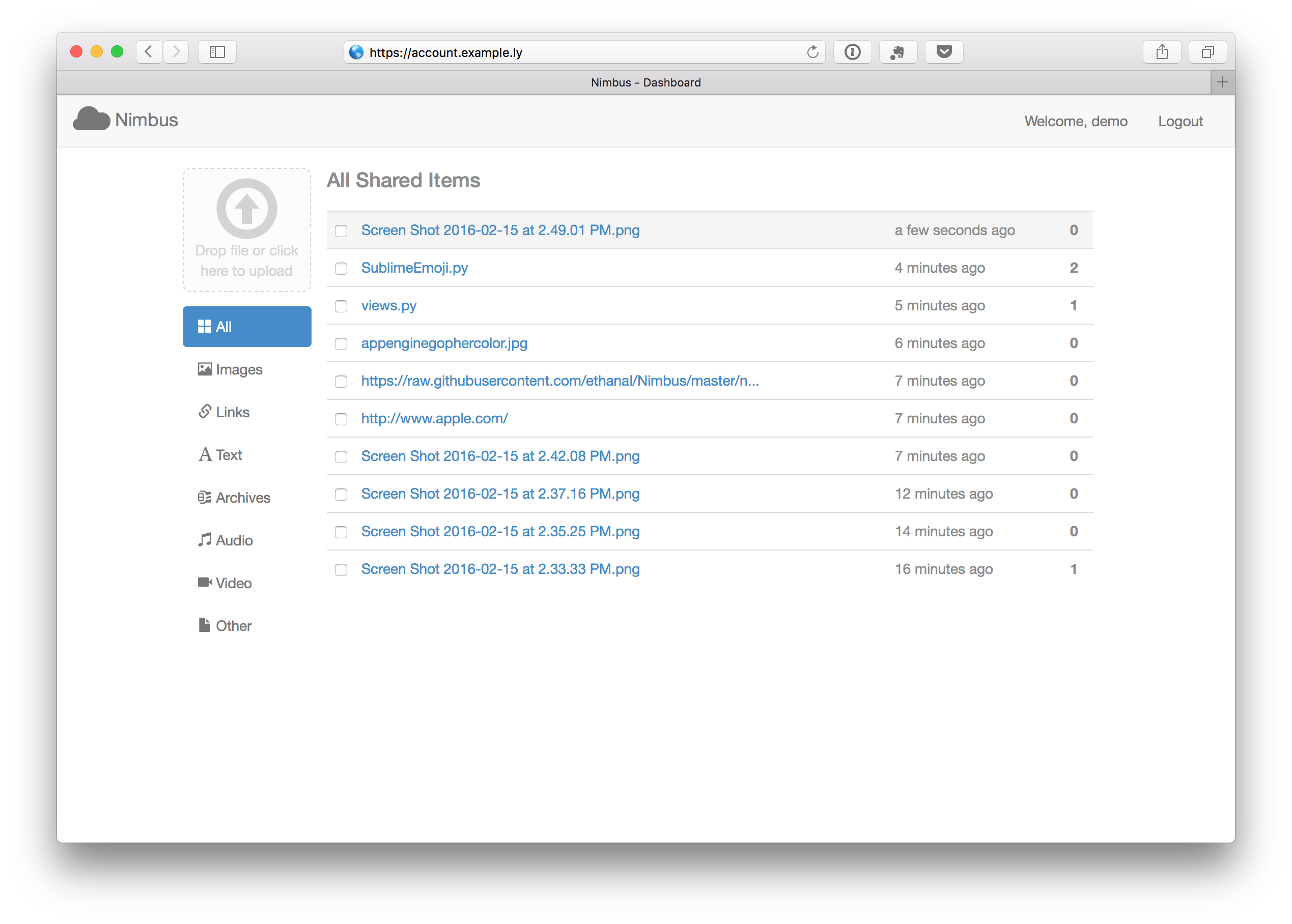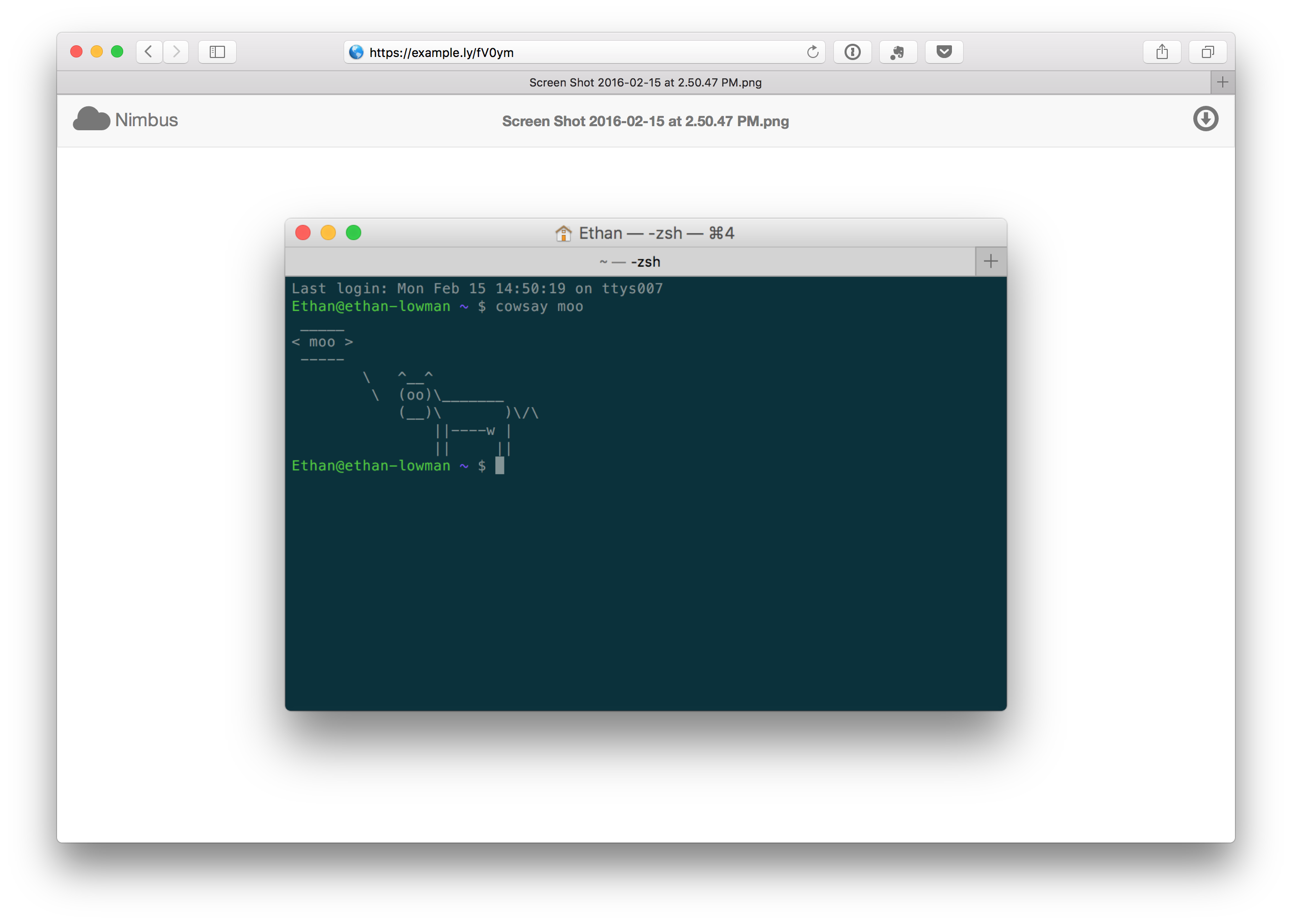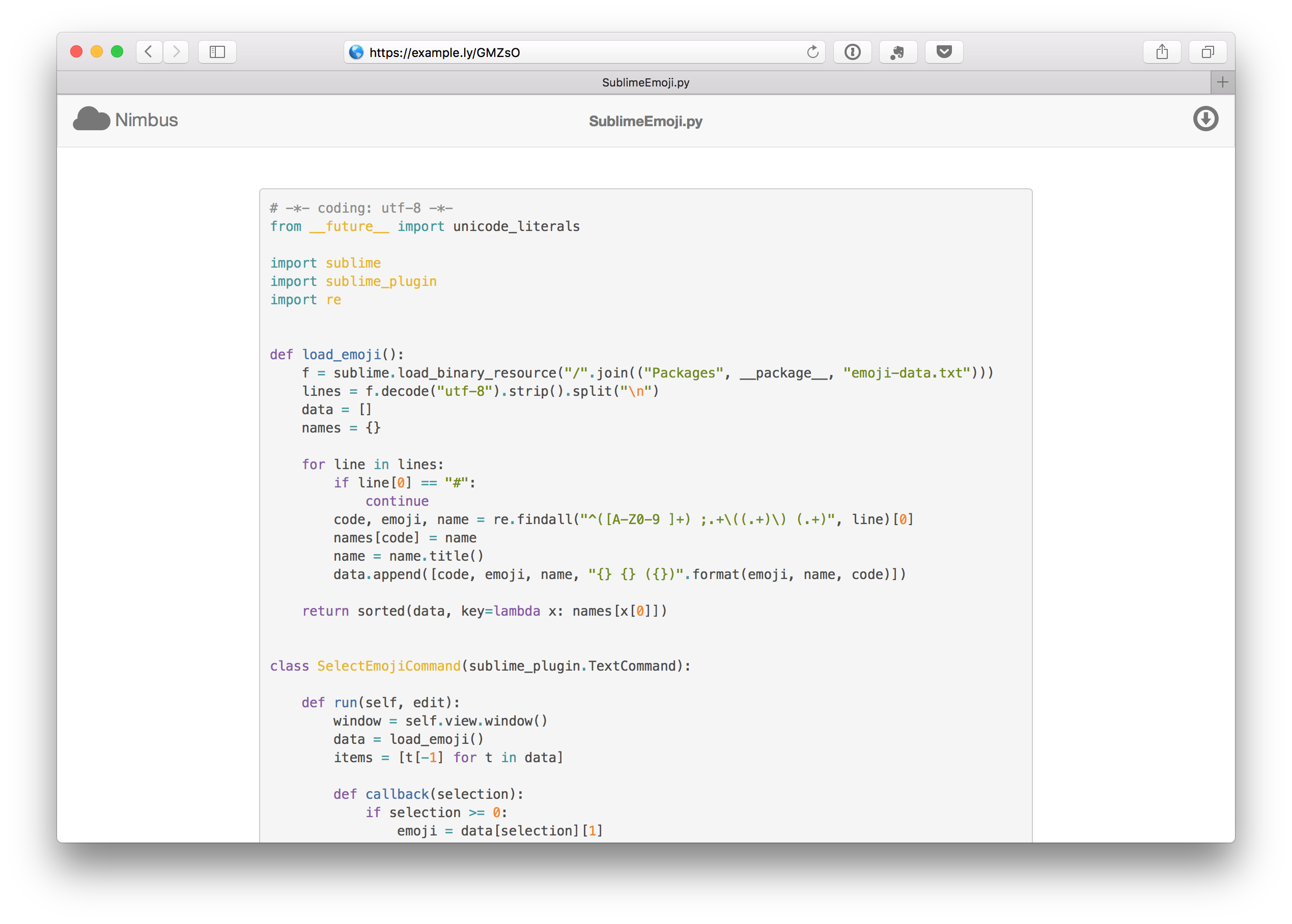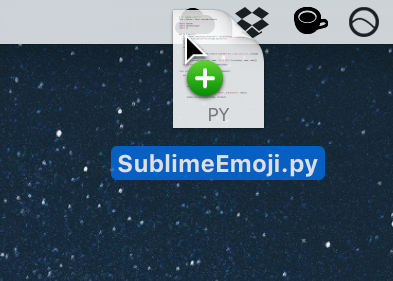https://github.com/ethanal/Nimbus
Not maintained. A private file sharer and URL shortener (like Cloudapp and TinyURL).
https://github.com/ethanal/Nimbus
Last synced: about 2 months ago
JSON representation
Not maintained. A private file sharer and URL shortener (like Cloudapp and TinyURL).
- Host: GitHub
- URL: https://github.com/ethanal/Nimbus
- Owner: ethanal
- License: mit
- Archived: true
- Created: 2014-06-12T01:11:57.000Z (almost 11 years ago)
- Default Branch: master
- Last Pushed: 2017-04-18T04:42:16.000Z (about 8 years ago)
- Last Synced: 2024-10-28T16:12:04.994Z (6 months ago)
- Language: Swift
- Homepage:
- Size: 2.4 MB
- Stars: 191
- Watchers: 5
- Forks: 25
- Open Issues: 7
-
Metadata Files:
- Readme: README.md
- License: LICENSE
Awesome Lists containing this project
- awesome-starred - ethanal/Nimbus - Not maintained. A private file sharer and URL shortener (like Cloudapp and TinyURL). (others)
README

Nimbus
Nimbus is a private file sharer and URL shortener. Heavily inspired by [Cloudapp](http://www.getcloudapp.com/), Nimbus is a free and open source solution to file sharing and URL shortening that you can host yourself and fully control.
Nimbus consists of several components:
* A website that displays sharing pages for generated links and redirects shortened URLs to their targets
* A website to manage shared items
* An API to manipulate shared items
* A Mac OS X menubar app to upload files and shorten links
The menubar app is only compatible with OS X 10.9 and up since it is written in [Swift](https://developer.apple.com/swift/). The files are stored in Amazon S3, so you must have an AWS account.
## Screenshots




## Features
- Share pages that show file previews or redirect to the shortened link
- Image file previews
- Text file previews with automatic syntax highlighting if applicable
- Screenshots are automatically uploaded and the share link is copied to the clipboard
- Drag a file or text to the menubar icon to upload it and copy the share link to the clipboard
- Drag a URL to the menubar icon to create a shortened link and copy it to the clipboard
- Keep track of view counts for files and shortened URLS
## Setup
To set up the Django app, perform the following steps on your server (assumes [pip](http://pip.readthedocs.org/en/latest/), [virtualenv](http://virtualenv.readthedocs.org/en/latest/), and [MySQL](http://www.mysql.com/) are already installed)
1. Create a virtualenv and activate it
2. Clone the repository (from here on, it is assumed that the respository's location is `/usr/local/www/Nimbus`)
3. While in the repository root, install the Python requirements by running
```bash
pip install -r requirements/production.txt
```
4. Create a database and grant a user full access to it.
5. Follow the instructions in `nimbus/settings/secret.sample.py` to create a secrets file with your MySQL and Amazon S3 credentials
6. Set up the environment for the Django app by running
```bash
export PRODUCTION=TRUE
```
7. Set up the database and create your user by running `./manage.py syncdb`
8. Start a Django shell (`./manage.py shell`) and run the following commands, replacing `example.com` with your domain name
```python
from django.contrib.sites.models import Site
Site.objects.update(name="example.com", domain="example.com")
```
9. Collect static files by running
```bash
yes yes | ./manage.py collectstatic
```
### Serving Nimbus
Make sure you have a domain name configured with the following records:
```
@ IN A
api CNAME @
account CNAME @
files CNAME files..s3.amazonaws.com.
```
Also make sure you have an Amazon S3 bucket called `files.`
The recommended setup for serving Nimbus is [Gunicorn](http://gunicorn.org/) managed by [Supervisor](http://supervisord.org/) with [nginx](http://nginx.org/) as a reverse proxy. Configuration requirements are as follows.
* Nginx must be listening on the subdomains `account` and `api` of your domain as well as the root domain. Forward all of this traffic to Gunicorn - the Django app handles the subdomain routing.
* The attribute `client_max_body_size` must be set in the nginx config to a sufficiently large value to allow uploads of big files.
* Static file requests (`/static/`) should be aliased to `nimbus/collected_static` in the repository root
* Supervisor must call the version of gunicorn in your virtualenv
#### Example Supervisor Configuration
```ini
[program:nimbus]
directory = /usr/local/www/Nimbus
user = nobody
command = /usr/local/virtualenvs/Nimbus/bin/gunicorn nimbus.wsgi:application --user=nobody --workers=1 --bind=127.0.0.1:8080
environment = PRODUCTION=TRUE
stdout_logfile = /var/log/sites/nimbus.gunicorn.log
stderr_logfile = /var/log/sites/nimbus.gunicorn.log
autostart = true
autorestart = true
```
#### Example Nginx Configuration
```nginx
server {
listen 80;
server_name example.com account.example.com api.example.com;
return 301 https://$host$request_uri;
}
server {
listen 443 ssl;
server_name example.com account.example.com api.example.com;
ssl on;
ssl_certificate /usr/local/certs/example.com.crt;
ssl_certificate_key /usr/local/certs/example.com.key;
client_max_body_size 1024M;
access_log /var/log/sites/nimbus.access.log;
error_log /var/log/sites/nimbus.error.log;
location /favicon.ico {
alias /usr/local/www/Nimbus/nimbus/static/img/favicon.ico;
}
location /static/ {
alias /usr/local/www/Nimbus/nimbus/collected_static/;
}
location / {
rewrite ^/((?!(api-auth|admin))(.*))/$ /$1 permanent;
proxy_pass http://127.0.0.1:8080;
proxy_set_header X-Forwarded-Host $host;
proxy_set_header Host $host;
proxy_set_header X-Real-IP $remote_addr;
proxy_set_header X-Forwarded-Proto $scheme;
}
}
```
## API Reference
API documentation can be found [here](api_docs.md).
## Contact
Ethan Lowman
- https://github.com/ethanal
- [email protected]